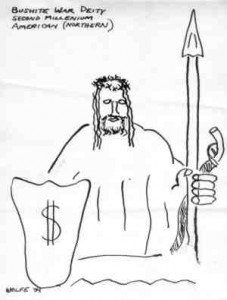Review by Martha Quillen
Local History – January 2005 – Colorado Central Magazine
Gunnison Kid
by Phil Klingsmith
Published in 2004 by Dunsmith Publishing House Ltd.
ISBN pending
GUNNISON KID is a memoir written by Phil Klingsmith to honor his parents’ fiftieth year in “their chosen hometown.” According to the cover copy, “Gunnison Kid could be about any town, city or hamlet in America; places like Nyack, New York, or Dover, Ohio, or Bend, Oregon.”
But unfortunately, that’s not true. Gunnison Kid is about Gunnison — and about 70% of the copy is dedicated to listing the names of businesses and people who won’t mean much to those who don’t live in Gunnison.
But with that said, I’d like to add that Gunnison Kid definitely has some homespun appeal. In fact, as I read, I wished someone had released a similar book about Salida. It could certainly help to put long-time residents, businesses, businessmen, and recent changes into perspective.
Gunnison Kid is not a candid account of life in Gunnison. On the contrary, it’s an unabashedly nostalgic and sentimental tribute to the town, which should charm many Gunnisonites, especially those who have lived there for a long time and who share many of Klingsmith’s memories.
Gunnison Kid is a short, well-organized, clearly written accolade to Gunnison and its people which may also please those who once lived in Gunnison, and those with relatives or loved ones from Gunnison.
But in a few places, Klingsmith’s affectionate acclaim for his hometown made me laugh in disbelief and I suspect it may have a similar effect on other outsiders. For example there’s the place where Klingsmith tries to claim that Gunnison is really not as miserably cold as Grand Junction or Denver. And there’s that section where he says, “It’s been said we can raise more cattle per square acre than any place on earth. That reality has to be a result of the combination of soil, sunshine, climate and the river.”
Well, yeah, maybe…. But cattle ranching is generally carried out on what’s considered “marginal” land that’s inadequate for intensive agriculture — and sometimes even cultivation — often because it’s too cold or high and therefore lacks an adequate growing season. Furthermore, ranching is frequently carried out on sandy grasslands with deficient topsoil. Thus, it’s pretty safe to bet that there are a lot of places which could support more cattle per square mile than Gunnison — but they are probably raising something that requires richer soil and a longer growing season.
IT’S THIS DEVOTION to hometown that gives Gunnison Kid it’s character, though. And Klingsmith is certainly enthusiastic about every element of Gunnison. He lists the kids in the starting line-up for the football game that led to Gunnison’s 1956 state championship, along with the best skiers in his own high school class, and the names of ranch families he remembers, and golfers, fishermen, doctors, builders, cowboys, miners, lawyers, firefighters, cooks, and band camp members.
That tendency to list everyone makes this book a problematical read for those unfamiliar with Gunnison. But books such as this definitely have their place, and they don’t just appeal to those who share the author’s nostalgia, either.
Recently, my sister took up genealogy and I volunteered to help with some of the computer research. That pursuit meant reading family trees, census lists, and tombstone transcripts, and sorting through countless names, which are not always particularly interesting in and of themselves. Therefore I tended to wander off the subject and read town, county and state histories instead. But every once in a while, I encountered that really rare combination, a family or town history which included my ancestors’ names and also put their lives in a setting which gave their existence some breadth and meaning.
Of course, such accounts tend to be syrupy and sentimental. But that’s why the author lists everyone he can think of: teachers, store clerks, band camp members…. They’re invariably written by someone who thinks that each and every person in a community and family are important — and I agree. They are. May Phil Klingsmith’s memoir survive to be read by those who have Gunnison connections a hundred years from now.
In the meantime, however, there is that other 30% of Gunnison Kid which contains information and observations which appeal to a more diverse audience. As a Salidan, for instance, I was especially interested in an account of the ’71 school bus accident on Monarch Pass which killed several Gunnison students. In Salida, as in Gunnison, popular parlance always has it that the accident was caused by driver error, but Klingsmith presents another side.
He writes about a conversation he had after the 25th anniversary of the accident. A friend had obtained a copy of the National Transportation Safety Board report, and another friend, Jamie McAndrews, a survivor of the accident was reading it:
Jamie said, “Listen to this: ‘ … the accident was not the result of driver error — it was an inevitable disaster caused by the simultaneous failure of the brake and transmission system.'” Jamie looked up and said, “For 25 years I’ve hated the driver (Royce Mustain) and now I find out it wasn’t his fault.”
But even though Klingsmith’s book contains numerous stories and comments about life which would interest a wider audience, those portions do tend to get lost in the lists of names. Maybe sometime in the future, however, Klingsmith will consider writing a memoir for a more general audience.
How about it, Phil?


